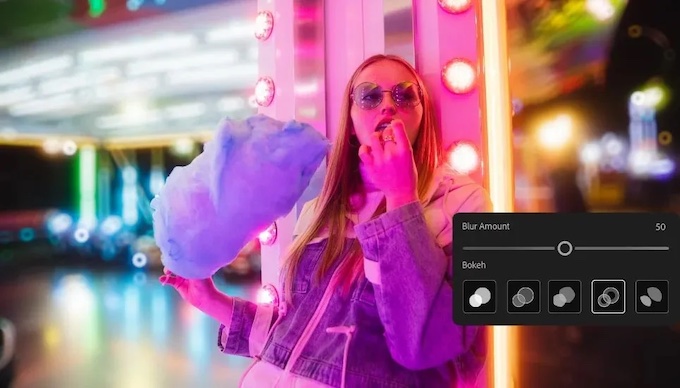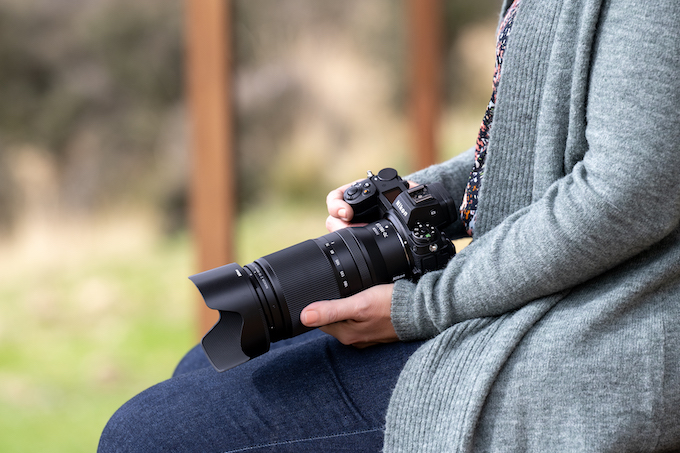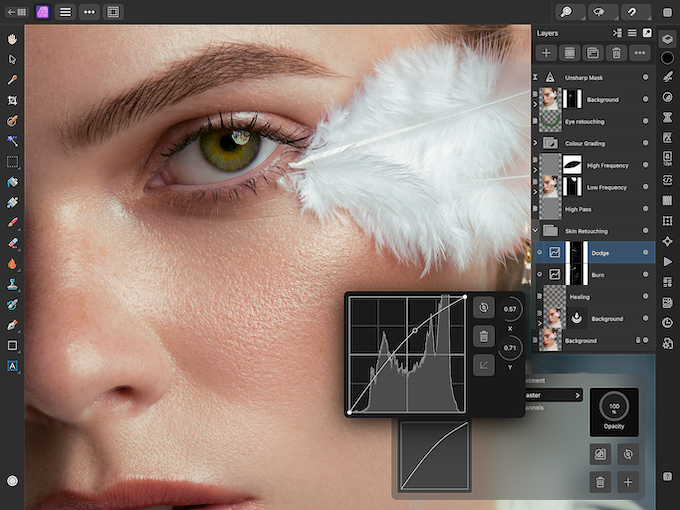First Exposure: Kubota Borders and Textures
August 1, 2011
Movie theaters are full of comic book action heroes these days. But Kubota Image Tools can make an action hero out of anyone—or at least a Photoshop action hero. Most professional photographers are familiar with the Kubota Artistic Tools, Production Tools and Dashboard tool for organizing and accessing installed Kubota Actions or any other action in their Photoshop library. These actions can save many hours of computer time by automating common imaging tasks.
Kubota Image Tools continually makes new “paks” of actions available to photographers. The latest of these are the Kubota Texture Tools. The company has teamed up with professional photographer Benjamin Edwards to create a fast and easy way to add unique textures to images. There are two versions of Texture Tools, “Earth Textures—Smooth Organic Pak” and “Industrial Textures—High Tech Electric Pak.” Each texture (50 in each pak) is individually created and can be easily applied to all image sizes, as well as to previously cropped images.
What makes it so easy to select and apply the textures is a separate Dashboard that includes a thumbnail preview of the texture when you highlight the texture name. The Borders and Textures Dashboard floats in the Photoshop window just as the Kubota Dashboard, now upgraded to Dashboard 3 Pro, does.
Re-released by Kubota Image Tools is the Sloppy Borders Image Pak that also installs into the new Borders and Textures Dashboard, complete with preview images of the borders. The borders came out of a collaboration between Kevin Kubota and Craig Strong of Lensbaby LLC. They went into the darkroom, filed out negative carriers (the old-fashioned way), made prints and then scanned the prints for the digital files.
Since the new Dashboard supports both sloppy borders and textures, it is called the Bor-Tex Dashboard. The most economical way to purchase the sloppy borders pak and the two texture paks is to buy the Kubota Bor-Tex Pak with a MSRP of $349, about a $100 savings over buying the paks individually. The Bor-Tex Dashboard is included with the Kubota Bor-Tex Pak or the individual paks.
If you have used any of the previous Kubota Image Tools action paks, the new paks and the Bor-Tex Dashboard will be instantly familiar. Installation is straightforward on both Mac and Windows platforms. After installation, the next time you open Photoshop, the Bor-Tex Dashboard will also open. As I mentioned earlier, the Bor-Tex Dashboard floats in the Photoshop widow and can easily be minimized or maximized by clicking on its title. (screen_01.jpg) This is nice, but even minimized it takes up screen space that I would rather have available for my image. I prefer a dockable palette, like the module onOne Software has devised, which loads as an Extension and can be docked as an icon with other Photoshop icons in the Window menu so that it only opens when it is needed. The palette can be closed down completely using the Automate command (File>Automate).
Applying textures to an image is fairly easy but perhaps not as easy as it could be With an image open in Photoshop, click the drop-down menu next to the search box to load the textures that you are interested in. (screen_02.jpg) If you know the name of the texture you want, you can enter the first few letters of its name into the search box and items whose names begin with those letters will be listed in the results box. The texture names are pretty random, apparently chosen by Edwards from various experiences in Africa, so they are hardly descriptive to anyone else. Fortunately, there is an Edit button in the Bor-Tex Dashboard where you can add your own keywords, and then search for them. For example, if you find several that you feel work great with weddings, add the keyword “wedding” and the next time you have a wedding image, searching on “wedding” will bring up those textures.
If you have no sense of which texture will work, select All Textures from the drop-down menu and a list appears in the results box. (screen_03.jpg) Click on a texture name and a thumbnail of it appears above the list. (screen_04.jpg) Here’s one place where things could be simplified. Rather than having to click on each name, I would prefer that the thumbnail refresh when I simply roll the cursor over the name. But in time I will likely settle on a few favorites that I can move to a Favorites category. Favorites are instantly available by typing “fav” in the search box, so this isn’t too big of a deal.
Once you select a texture, double-clicking its name or clicking the Apply button in the Bor-Tex Dashboard creates a new layer and loads the texture 1:1 over the image. A dialog box opens that allows you to accept the same-size overlay or use adjustment handles to transform it. (screen_05.jpg) Here’s another place where applying the texture could be easier. At this point, the texture is displayed at 100% opacity, and you cannot see the underlying image on which you are working. This makes it difficult to impossible to accurately position or transform the texture, which is important with many of the Industrial textures. I wish the textures came in at, say, 75% opacity, so I could transform and position them easily. As it is, I have to adjust the opacity slider in the Photoshop layers palette to see the underlying image and check on the texture’s positioning.
Once you are happy with the position, click Enter/return on the keyboard to apply the texture. The layer becomes a Smart Filter with a layer mask, and the texture at 80% opacity in Overlay blending mode. (screen_06.jpg) The Basic Tools section of the Bor-Tex Dashboard contains options for other blending modes and texture opacities, saving you from using the Photoshop sliders. (screen_07.jpg)
With the texture applied, the action leaves you with the Photoshop brush tool open with white paint loaded and ready to paint on the layer mask to paint away the texture from any area, such as skin, where it isn’t wanted. (screen_08.jpg)
As I was going through this process, I went on to apply another texture (Dirty Shoe) on top of my first one (Cheap TP) and a New Starburst Vignette auto, a new vignette in the Dashboard 3 Pro. Then I was ready to apply a sloppy border.
With the Sloppy Borders—Heavy group selected from the drop-down menu, I clicked through the thumbnails until I found one I thought was appropriate: Sushi—Sloppy Border Grow. Double clicking on the name, runs the action and adds appropriate layers to the Layers palette. (screen_09.jpg)
Now all I needed to do was to sharpen the final image with Smarter Sharp using edge mask 1 from the Dashboard 3 Pro tools and save it for printing.
If I were doing this for a client, the entire process, from opening the original image to saving it for printing, wouldn’t have taken more than five minutes, probably much less. But not only are the Kubota Borders and Textures tremendous time savers, they set your images apart from your portrait competitors and from all the other “photographers” snapping pictures over your shoulders at weddings and events.
And they’re not only for portraits, seniors and events. Textures and borders are appropriate for landscape, nature, close-up and fine art images. This article barely touches on the options available in the Bor-Tex Pak—there are 48 other textures and 124 other sloppy borders that I haven’t even mentioned. Combined with the Kubota Image Tool actions in other paks, they may be just what you need to move you out of your comfort zone and on to some new looks for your images.
More information on the Bor-Tex Pak or the individual Sloppy Borders, Texture Tools-Earth and Texture Tools-Industrial paks is available at www.kubotaimagetools.com. I’m betting that they will save you enough time to make it to the theater to catch that latest action hero movie you’ve been wishing you had time to see.
System Requirements
PC: Windows XP or higher; Photoshop CS3 or higher, reliable Internet connection*
Mac: OS 10.5 or higher; Photoshop CS3 or higher, reliable Internet connection*
*Bor-Tex DASHBOARD occasionally requires internet access to check for updates. If Internet access is unavailable when necessary, the Bor-Tex DASHBOARD may be temporarily unavailable until an Internet connection is reached.
Stan Sholik is a commercial/advertising photographer in Santa Ana, CA, specializing in still life and macro photography. His fifth book, Nik HDR Efex Pro, for Wiley Publishing, is available in October.




